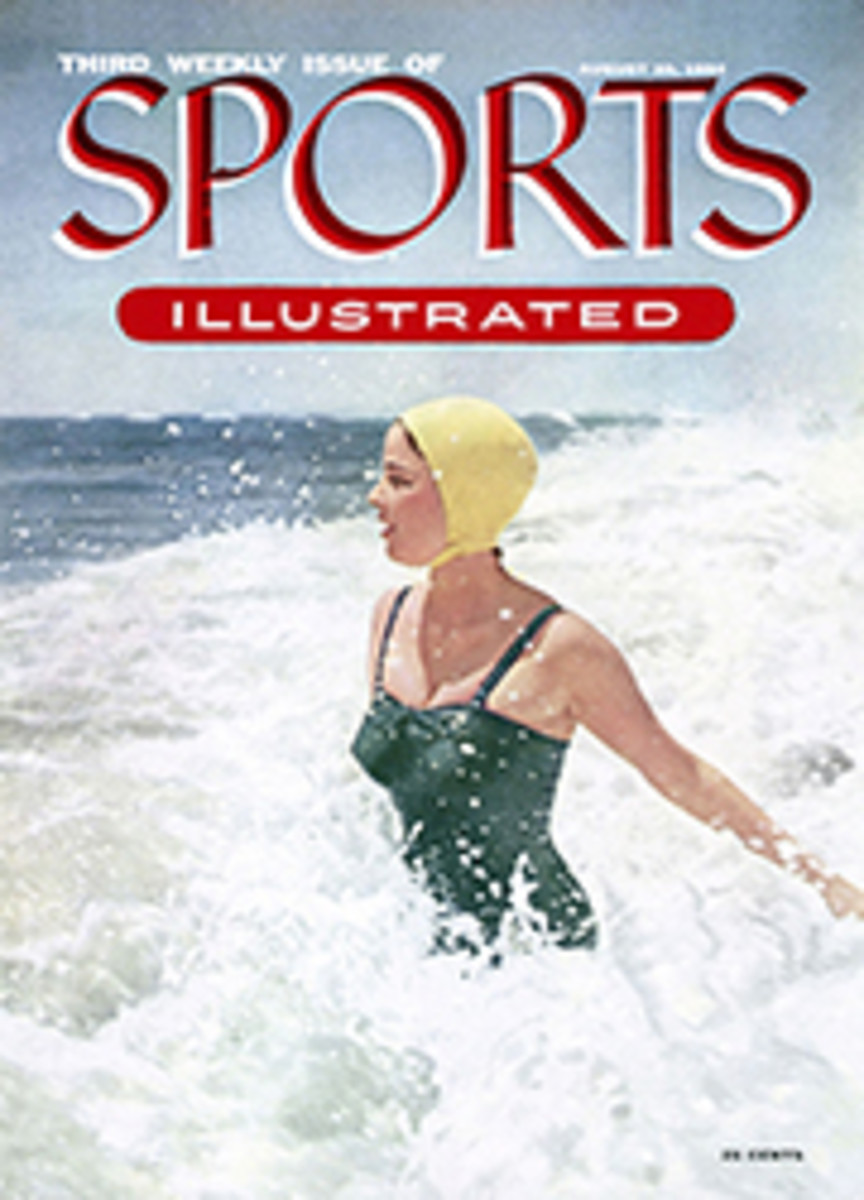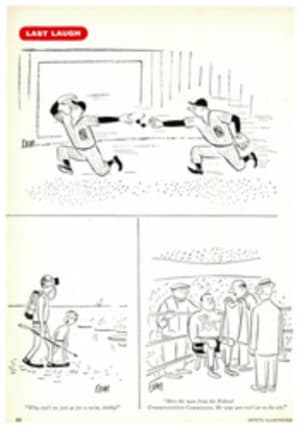
Under The Lights
TO THE FAN sitting at home before his television set, night baseball looks very little different from the day game. Not so for the fan in the stands. Night baseball is an exciting spectacle, as the picture opposite and those on the following pages show. The floodlights brighten the green turf, emphasize color contrasts. "The game is speeded up," said William Harridge, president of the American League and a reluctant convert to the night game. "The flight of the ball is faster. The movement of the fielders seems accelerated. It's terrific."
Terrific or not, one thing is sure: there is nothing new under the moon, least of all outdoor games. When Connie Mack was a professional football tycoon—this is a skeleton from the closet of his dark past, circa 1905—his Philadelphia Athletics played a night game in Pottsville, Pa. The only illumination was a spotlight trained, theoretically, on the football. This probably was one reason why the boy promoter and his partner, John Shibe, went broke and had to get John's father, Ben, to bail them out.
JIM AND HIS SHADOW
As a jockey in the '90s, Sunny Jim Fitzsimmons, the celebrated horse trainer, rode night races on Long Island tracks. He drove his mount rubber-legged one night trying to beat back a challenge in the stretch, then discovered he'd been racing his shadow.
Leland Stanford MacPhail, the eruptive genius of sports promotion, is considered the father of night baseball because he introduced it to the major leagues 19 years ago. There are, however, records of ball games played at night as early as 1880.
In that summer two amateur teams played to a tie under new-fangled electric lights in Nantasket Beach, Mass. On the night of June 2, 1883, the Quincys of Illinois whipped a picked team representing Fort Wayne, Ind., 19 to 11 in seven innings in Fort Wayne. The Jenny Electric Company put up 17 lamps, three on the grandstand and 14 on masts. They went out twice.
The Baltimore team of 1890, not necessarily better than the one of today, needed only four innings to lose a night game in Hartford, Conn., 26 to 19. There were added attractions: cornet solos, foot races in which Ray and Henry of Baltimore beat O'Connell and Staib of Hartford. The lights were inadequate and so were the police, who couldn't keep the 3,000 customers off the field.
The powers of darkness—or, if you prefer, the princes of light—took over on May 24, 1935, when the Reds beat the Phillies in Cincinnati, 2 to 1, before 20,422 witnesses to the first night game in the majors. President Franklin D. Roosevelt touched a gold key in the White House and turned on 616 lamps of 1,500 watts each over Crosley Field.
In the depression years before that, night baseball had spread through the minors. In the smaller cities where relatively few people have the leisure to attend afternoon games, it was financial salvation. It had been taken up by such barnstorming teams as the bearded House of David troupers, who hauled lighting equipment with them instead of razors.
Thus when Larry MacPhail brought night ball to the majors it was considered strictly bush. Scarcely anyone believed this circus dodge would last. The quality of play would have to be inferior. Pitchers working in the chill of evening would ruin their arms. Late hours would close the parks to children, the cash customers of tomorrow.
MacPhail moved from Cincinnati to Brooklyn and turned on lights in Ebbets Field, the second big league park to be so equipped. When he crossed the river to Yankee Stadium, he brought night ball to that cathedral of the game. He always warned against overdoing it, arguing that night ball would lose its attraction as a novelty if a club played more than seven games after dark, or at most 14, in a season.
IN GOD'S SUNSHINE
Baseball has followed his lead and ignored his advice. Fifteen of the 16 major league clubs—the Chicago Cubs are the big exception—have lighting plants. Of 1,232 games in the American and National Leagues this year, 454 were scheduled for night. In the American League last season, attendance averaged 9,656 by day (including the big Sundays, holidays and double-headers) and 14,228 at night. In the National League, the figures were comparable, 9,544 against 16,395.
There still are some holdouts. Babe Ruth knocked the night game early. Joe DiMaggio, retiring, said it took five years off his career. Aging sentimentalists, including this one, whose affection for baseball was nurtured on lazy summer afternoons in sunny cow-pastures, take a dim view of the brightest lights.
But the financial figures have the last word, of course, because baseball is a business. There are many times more people free to buy entertainment at night than in the afternoon. "The game was meant to be played in God's sunshine," Washington's Clark Griffith used to say. Then he saw the financial figures, and henceforth left the sunshine to God.
TEN AND OUT
Joe Engel, manager of the Chattanooga baseball club, got this wire from a rookie he was dickering for: "Double the salary offered or count me out." The next day the rookie received the following wire from Engel: "1,2,3,4,5,6,7,8,9,10."
from Fred Russell, Nashville Banner
PHOTO
MARK KAUFFMAN
In Milwaukee, night baseball has overtones of fiesta. Big, noisy crowds and slam-bang games are the rule. Here, ignoring bad weather, 30,018 fans turn out for a Braves-Giants game and hoot and whoop as Giant infield shifts radically to the right for powerful pull hitter Ed Mathews (below).
PHOTO
Hustling Giant Westrum rounds first base after a clout to the outfield
PHOTO
The Braves' Aaron gets set to run as the Giant infield senses a bunt
PHOTO
Alone in a sea of bright green grass, Milwaukee right fielder Andy Pafko runs in to bat. Losers this time, the Braves take on the Giants in another night game, same scene, this week
ILLUSTRATION
PHOTO
Hy Peskins
In Hy Peskin's photograph from a helicoptor the Yankee Stadium glows like a jewel on velvet

